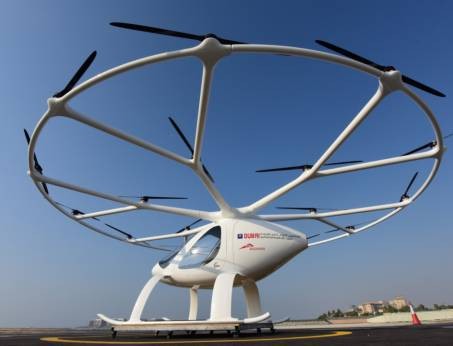
This article first appeared in the May 2018 edition of our free newsletter, to subscribe click here
As part of the white paper I wrote on the aerial urban mobility market I had the chance to review over 60 concepts. Most of which rely on lift rotors, or vectored thrust, for some of their flight envelope. In the white paper I touch on some of the problems with this approach but there are specifics that are useful to examine.
I am not a flight dynamics expert (as the following may confirm) but a few things do appear to be readily apparent.
This is one train of thought:
- there is a reliance on multiple lift rotors or vectored thrust for take off and landing
- The highest number of lift rotors on any aircraft previously certified for civil use is two
- My assessment is more than two lift rotors require some form of software control or stability augmentation
- Software in critical aircraft systems is very, very expensive to certify
This is another:
- helicopters mitigate an engine failure through auto rotation
- If you do not have large rotors that allow this you need an alternative mitigation
- The most likely mitigation is a BRS system (ballistic parachute system)
- For a BRS system to work you need speed and time
- In a hover close to the ground this will not work
- A BRS system is heavy anyway, with projected battery capacity this must be a severe detriment to aircraft performance
For electric multi rotor systems the following train of thought then occurs:
- what if each rotor is fed by a totally independent shielded bank of batteries, can you argue that total power loss is practically impossible?
- Does that mean if you have 8 rotors you need 8 independent charging points?
- Does each power system has to be isolated inside an independant faraday cage type protection to mitigate lightning strike?
- This is giving me a headache, why don’t I just go buy a Robinson R44 helicopter?
- For the amount of money I would have to invest in developing a new vehicle of this type I could buy the Robinson helicopter company…….
So, do I have this all wrong? Will multirotor vehicle concepts prove to be simple to certify and will they dominate the market? As I briefly touch on in the white paper, any aerial urban mobility vehicle that makes it to market has to compete with the only existing aerial urban mobility vehicle – the helicopter. Any successful concept would have to be safer/quieter/cheaper/faster/longer range than a helicopter. How many are?
Richard,
I think you forget to mention a Robinson didn’t fell from the sky out of a sudden. Behind the Helicopter technology, where it stands today, are decades of development and investment with all sort of set backs and fails.
You are quite right – and all of these new concepts will have to do through that process before the reach the same level of reliability. I always come back to the question ‘why not buy a helicopter?’